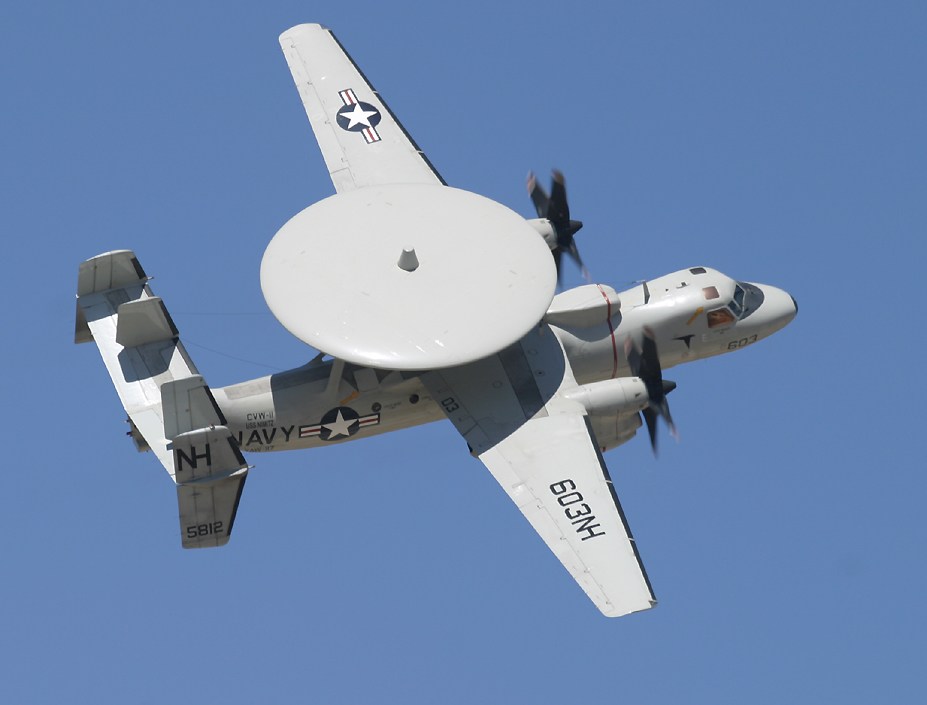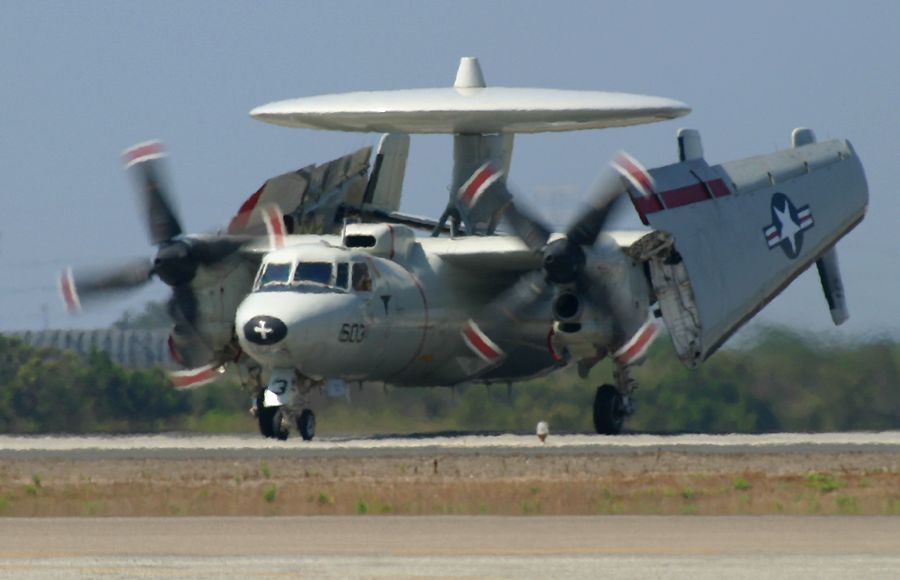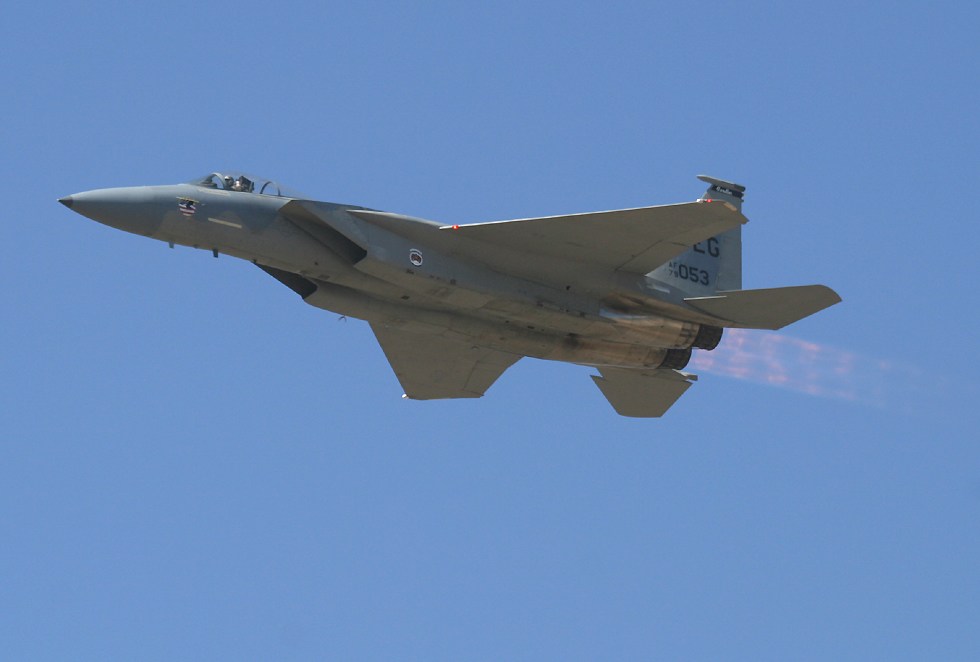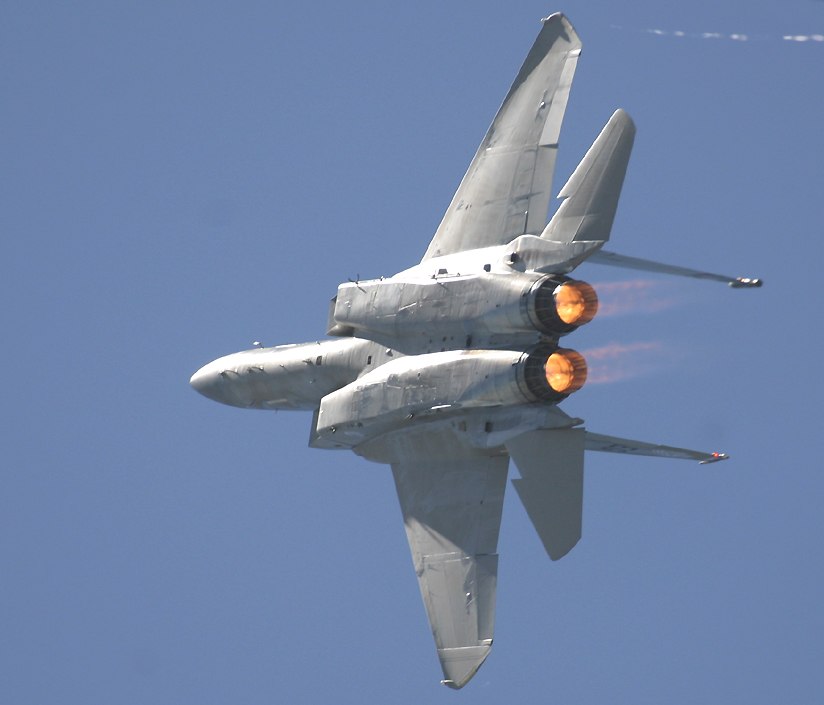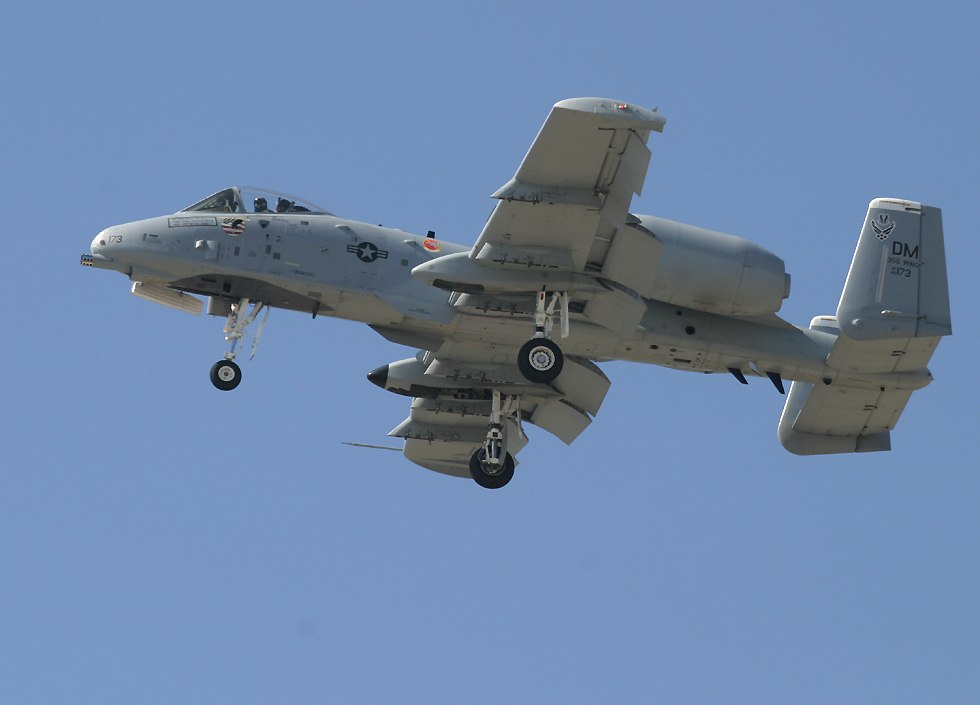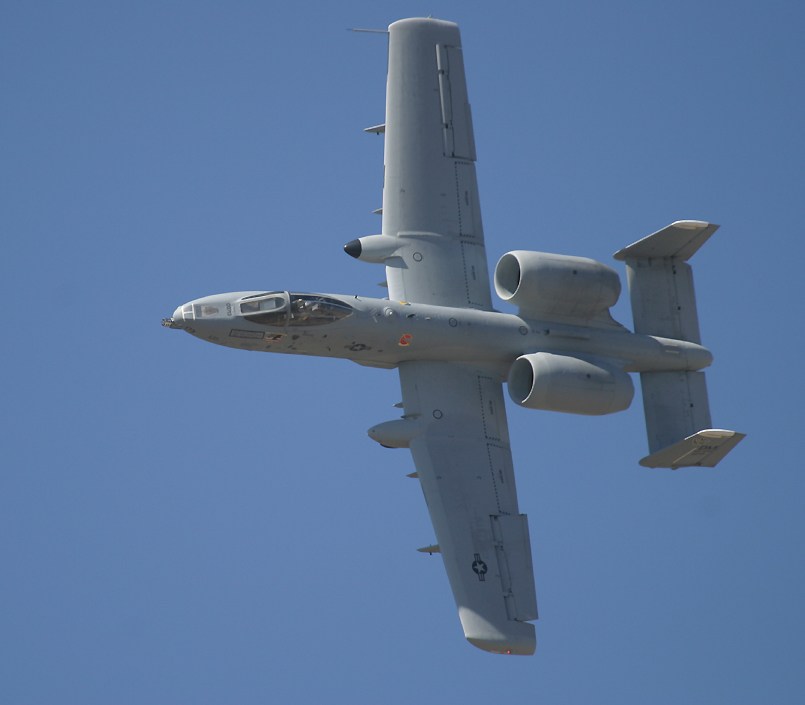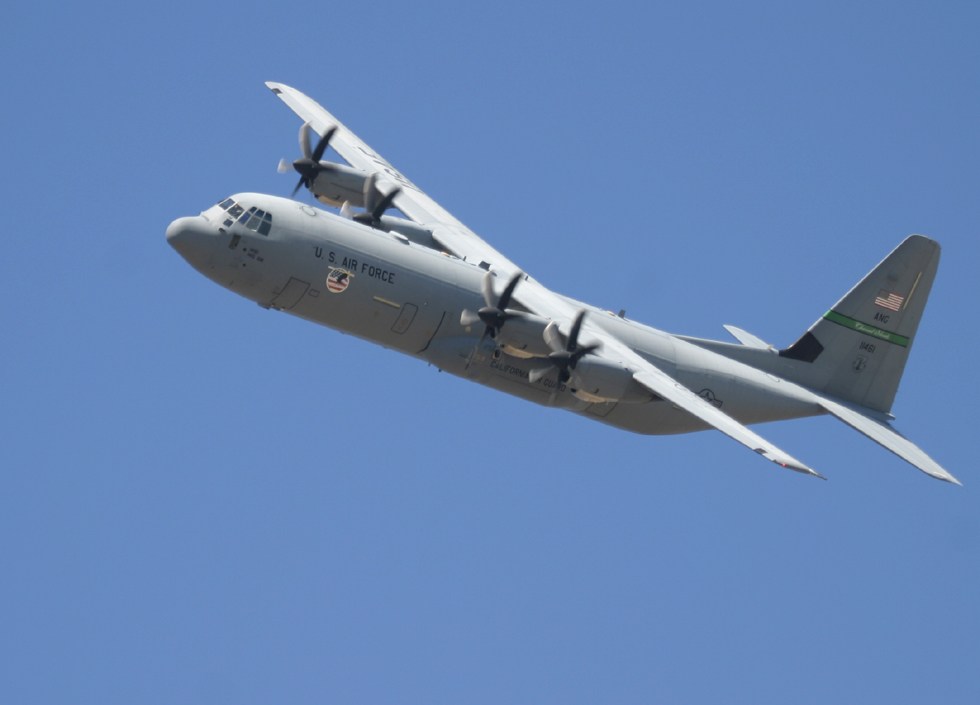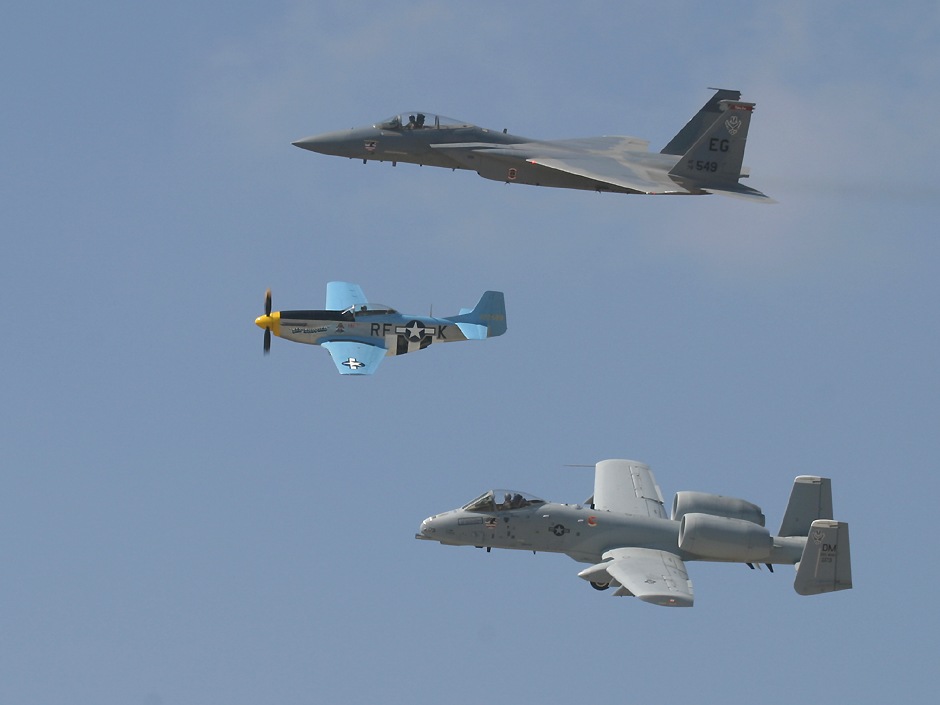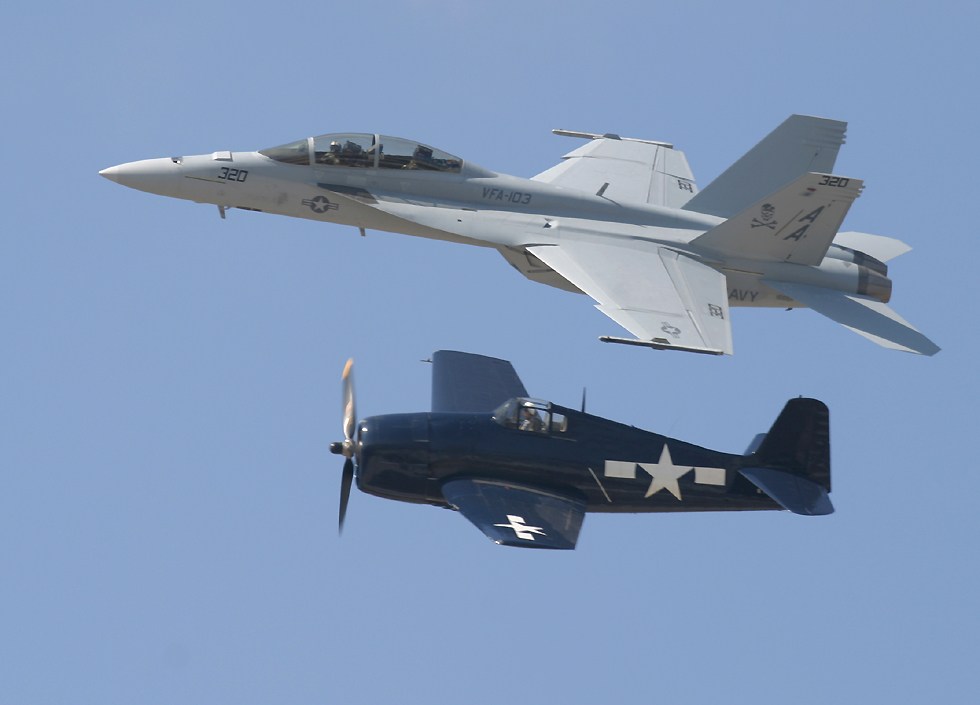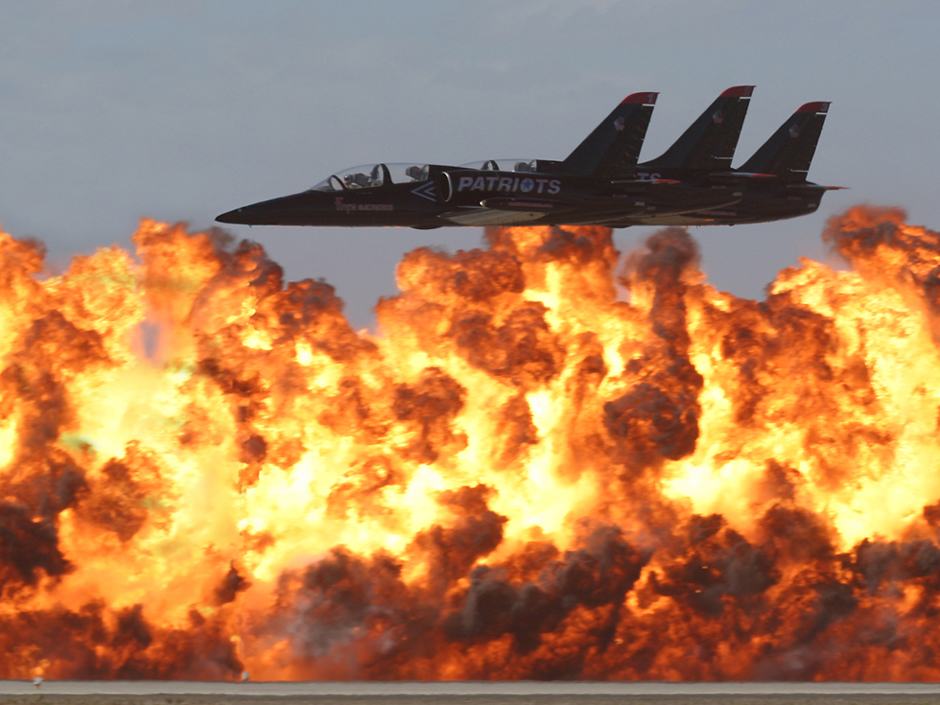Point Mugu Airshow 2004 Highlights
|
Here's a real glamor aircraft, an F-18F Super Hornet, significantly larger than its F-18A/B/C/D Hornet predecessor, and distinguishable by the rectangular air intakes (compared to the Hornet's rounded ones) and the small "dog tooth" in the leading edge of the wing. Before you get any ideas, this plane wasn't going supersonic during this flypast! There was a lot of moisture in the air on the morning it did this high-speed sub-sonic pass, and the partial vacuum surrounding the plane as it pushed through the sky was enough to cause this moisture to condense out, for a small fraction of a second. You can see another nice Super Hornet vapor cone at the 2008 Miramar airshow. |
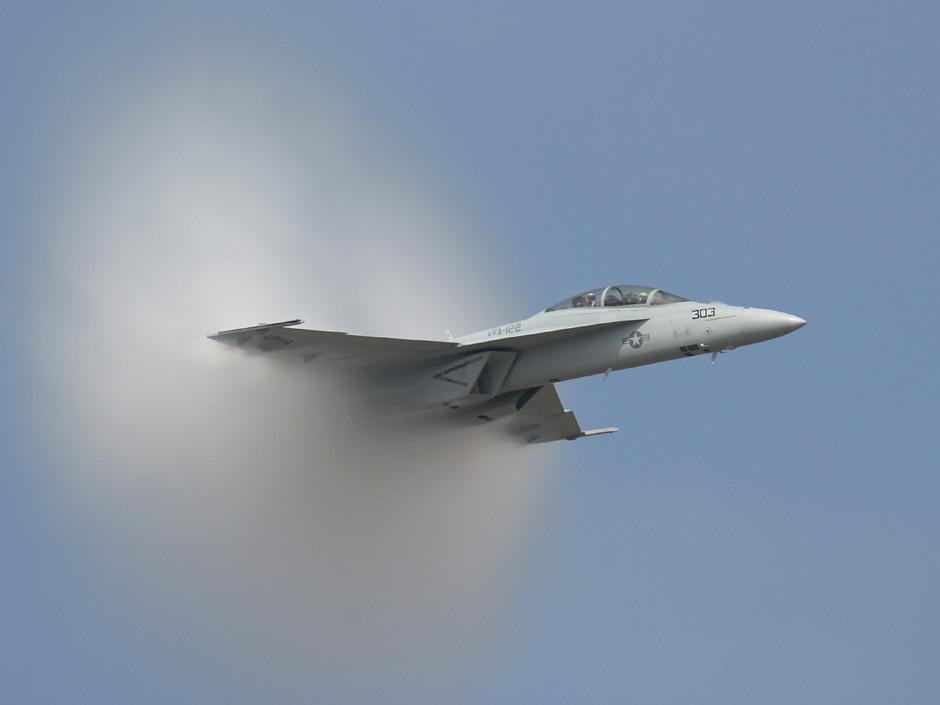 |
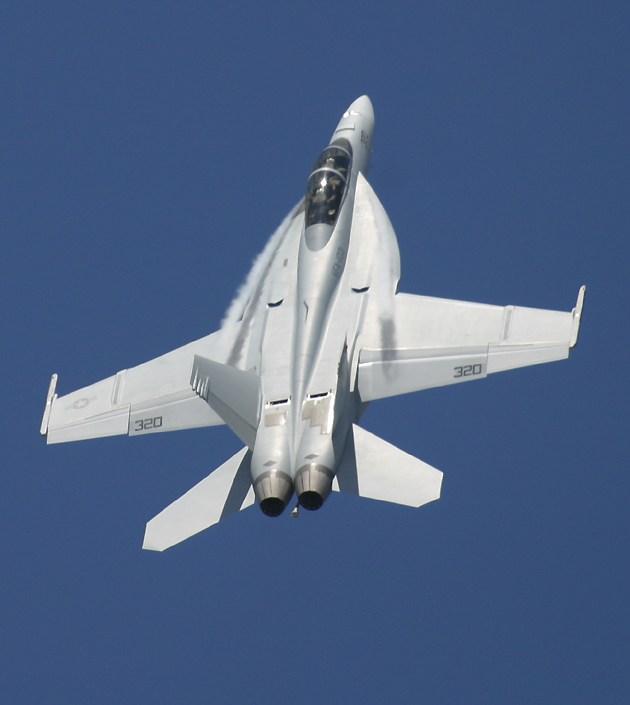
Traces of vapor trail off the leading edge wing extensions, which are actually designed to produce vortices like this in order to keep air flowing over the tops of the wings when the plane is flying at a high "angle of attack" such as this one is doing. The Super Hornet has much larger wing extensions than the original Hornet, because the earlier extensions caused turbulence which impacted the vertical tail surfaces, resulting in some serious damage which put the entire program into jeopardy. If you want to see more Super Hornet photos, with more technical data, then go to my Dayton Airshow 2003 Super Hornet page, which will open in a new window. |
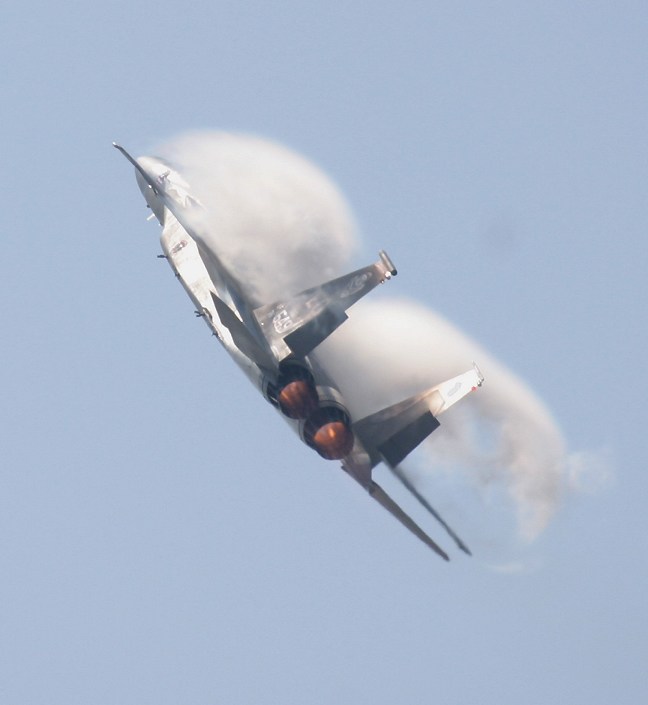
It's good to see where my tax dollars are going - straight out of the back of this guy's engines! Oh, but it's worth it just to show that the air force can pull vapor bursts every bit as well as the navy can! But for a real display of vapor check out the 2007 Point Mugu airshow, where almost every plane in the air was accompanied by a large and fast-moving cloud! |
